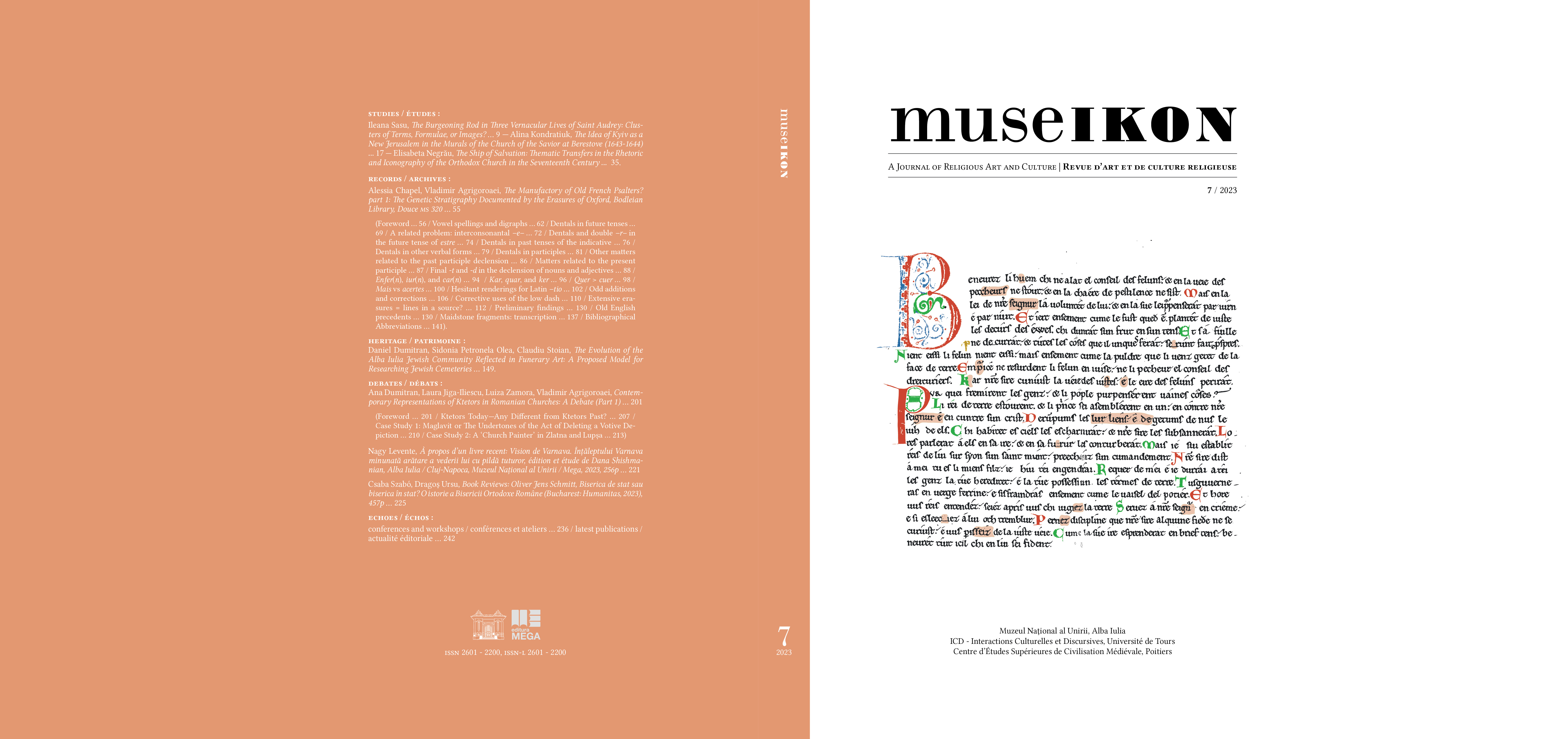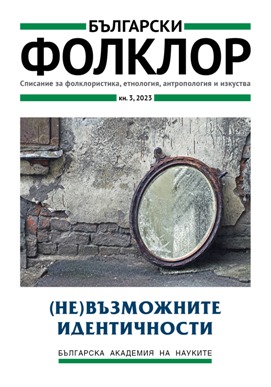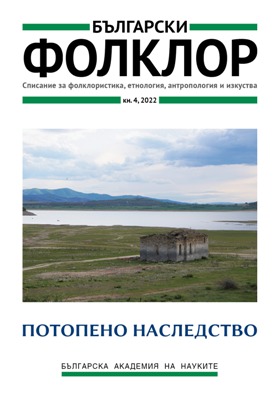
We kindly inform you that, as long as the subject affiliation of our 300.000+ articles is in progress, you might get unsufficient or no results on your third level or second level search. In this case, please broaden your search criteria.

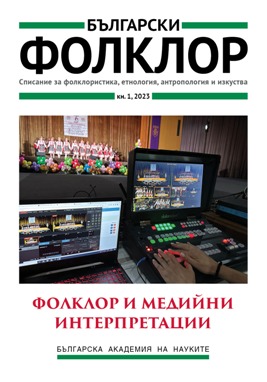
The ways in witch advertising uses folklore motifs are rather varied and interesting. In this article, we first clarify what the essence of advertising is at a theoretical level, who it is aimed at, what is presented and how it is presented, and of course, also who orders the advertisement. This synthesizing theoretical introduction is necessary in order to fully understand the differences between audio advertising, visual and audio-visual presentation, as well as how contemporary advertising permeates the media environment including Internet and social networks. Also significant is the psychological effect on the costumers, which uses a number of traditional stereotypes and expected behaviour patterns. Subsequently, we will look in more detail at the role of folklore and especially folklore narratives in advertising, including its changes in the last century, which we will illustrate with two specific examples. The next part of the article consists of an analysis of two contemporary advertising campaigns with dominant folklore motifs in the Czech media environment (Equa bank and Seznam.cz), in which we show in detail the way they communicate with the costumer, the folklore stereotypes used and the comments of the clients and creators of these advertisements regarding the expected effect of the campaign.
More...
Diverse influences of folklore tradition in contemporary media are presented in this article. The pandemic “closure” and encapsulation of the normal rhythm of life in 2020 unleashed a wave of creative TV, radio, social media manifestations, focused not only on covering the unusual situation, but also on the particular “return” to traditional practices and ways of adapting to the daily life routine. Self-introspection became a journey towards primordial rituals where tragic and comic coexist in the resistance and affirmation of life. The observed and analysed examples are from the Czech and Bulgarian media environment.
More...
Internet memes are a basic representative of online folklore, which naturally arises and lives as part of virtual communication. Similar to political jokes, some of them comment on, gloss over, criticize and satirize political and social events, making them part of political participation and communication „from bellow“. The purpose of this case study is to use the example of the Slovak online platform Zomri [Die] to show how an amateur entertainment project, which is part of participatory online culture, became part of a societal discussion thanks to social network and popularity. Attention is paid to various actors (site admins, the public, politicians, media), the activities of those actors and the spillovers outside the internet environment. The study combines folkloristic theoretical starting points with approaches from media and pop culture studies. It is based on long-term online research of the platforms, its content, secondary activities and spillovers into other areas of the online and offline environment. It also builds on the analysis of media interviews and discussion with platform admins.
More...
The article presents a study of the “fake news” problem from an emic perspective, focusing on media practices. The study aims to place people as conscious and active subjects of cultural production and consumption at the analysis’s centre and present the problem through their actions, reactions and interpretations. Different cases of questionable content circulating through Bulgarian media space are analysed, and their functions and uses are outlined. Two main functions of fake news are specified: 1) as an aspect of popular culture and 2) as a genre of disinformation. The features of users’ reception and interpretation, the subversive impact of fake news in the media ecosystem and its usage in the so-called ‘information wars’ are examined in detail. The conclusions emphasise the role of humour and laughter as mechanisms of counteraction.
More...

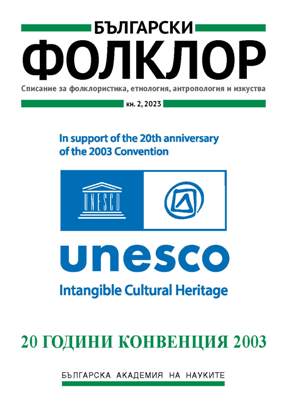

The paper analyses the evolution of the notion of cultural heritage from a comparative perspective and verifies the impact produced by the UNESCO Convention for the Safeguarding of the Intangible Cultural Heritage in 9 countries (Mexico, Brazil, Italy, Jordan, Cyprus, Spain, Burkina Faso, Korea, Japan).
More...
This article examines the process of safeguarding intangible cultural heritage as a factor for sustainable development. It traces and highlights the synergies between intangible cultural heritage and sustainable development. At the same time the author explores the interconnections between the different domains of intangible cultural heritage and the achievement of the Sustainable Development Goals, through the normative documents of the leading international organisations in the field.
More...
As UNESCO’s Convention for the Safeguarding of the Intangible Cultural Heritage turns twenty, the article focuses on its primary aim of safeguarding people’s living cultural traditions, practices, and expressions at the local level. Safeguarding measures are promoted throughout the Convention and related texts, but it is arguably the Register of Good Safeguarding Practices through which actual approaches are presented as being put to the test. The article uses the Register as a launchpad for examining community-based approaches to safeguarding ICH, and distilling “good” considerations for building ethical and equitable collaborations – from the first steps of initiatives to over the long term.
More...
This article reviews two co-existing and mutually conflicting concepts in Bulgaria: the one of folklore and the policies of its conservation in the course of the 20th century, and the one of intangible cultural heritage (ICH) and the efforts for safeguarding it following the adoption, in 2003, of the relevant UNESCO Convention. A comparison is made between the folklore festivals, characteristic of the second half of the 20th century, and the Living Human Treasures Bulgaria National System, created in 2008 as one of the fundamental cultural policies of the Republic of Bulgaria in this sphere, which has resulted in the compiling of the National Representative List of the Intangible Cultural Heritage. Based on observations made during several of its consecutive iterations conducted so far, the article seeks to outline important aspects and issues of the rationalization of ICH and its safeguarding at the present moment. The author draws on her experience as a member of the team of scholars at the Institute of Ethnology and Folklore Studies with Ethnographic Museum of the Bulgarian Academy of Sciences (IEFSEM – BAS), which has been participating actively at expert level in the implementation of the 2003 Convention in Bulgaria.
More...
The 2003 Convention and Its Implementation in Bulgaria
More...
The 2003 Convention and Its Implementation in Bulgaria
More...
The 2003 Convention and Its Implementation in Bulgaria
More...
The 2003 Convention and Its Implementation in Bulgaria
More...
